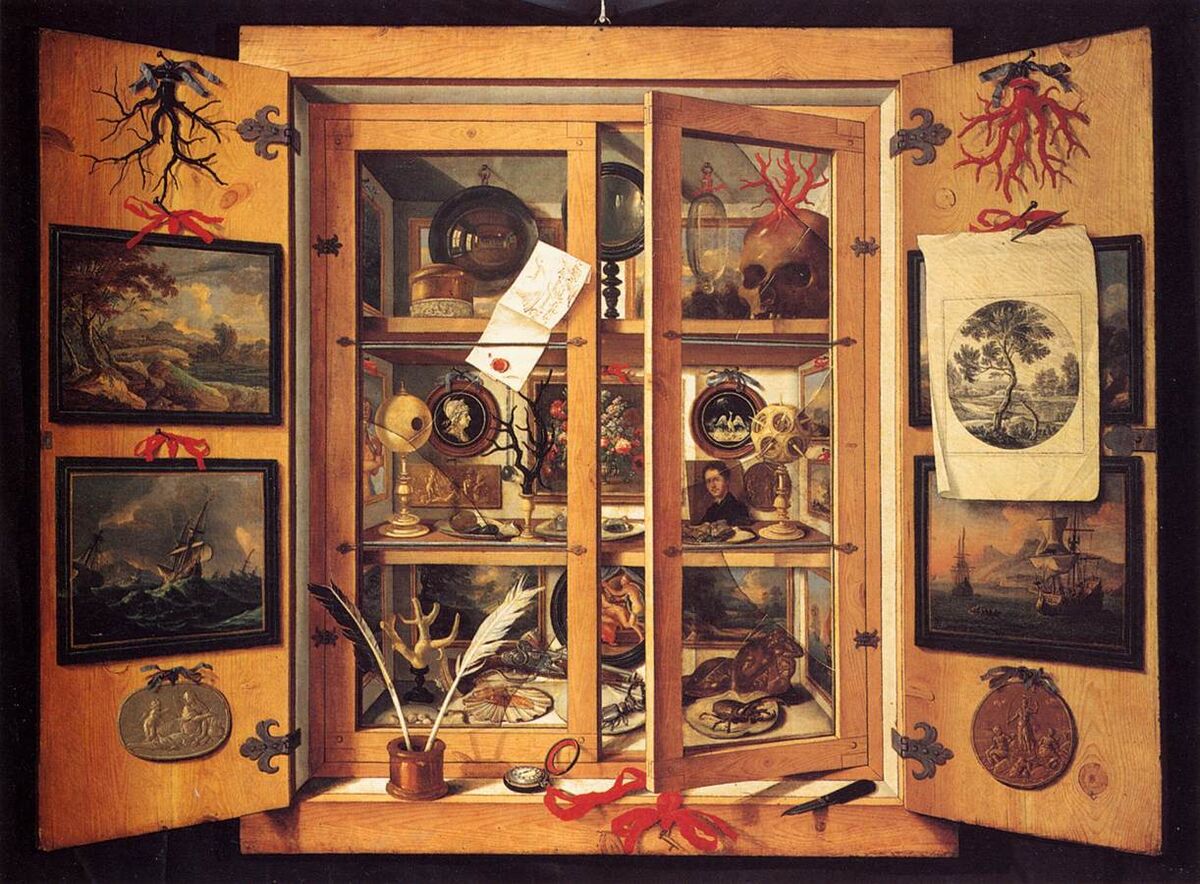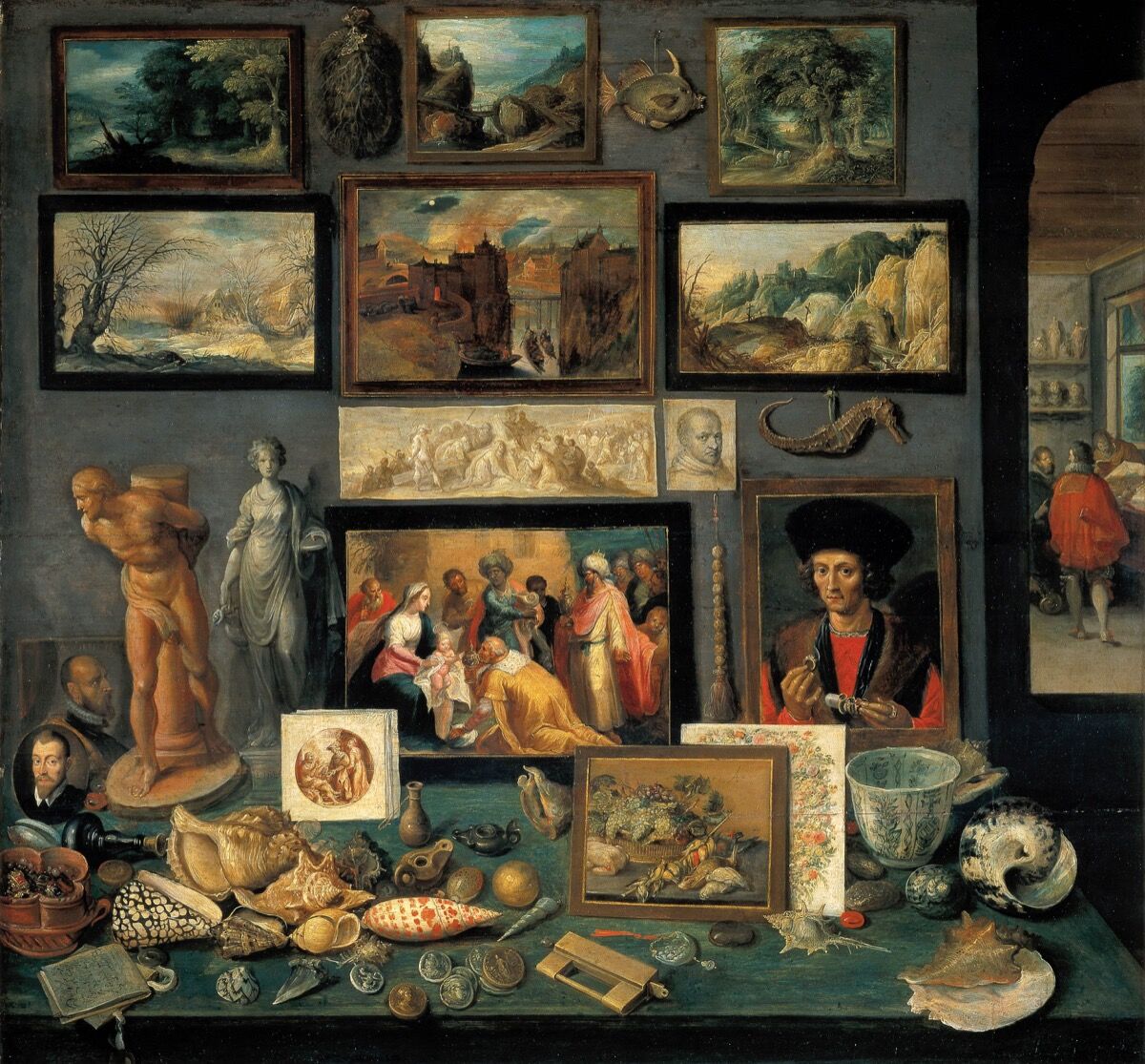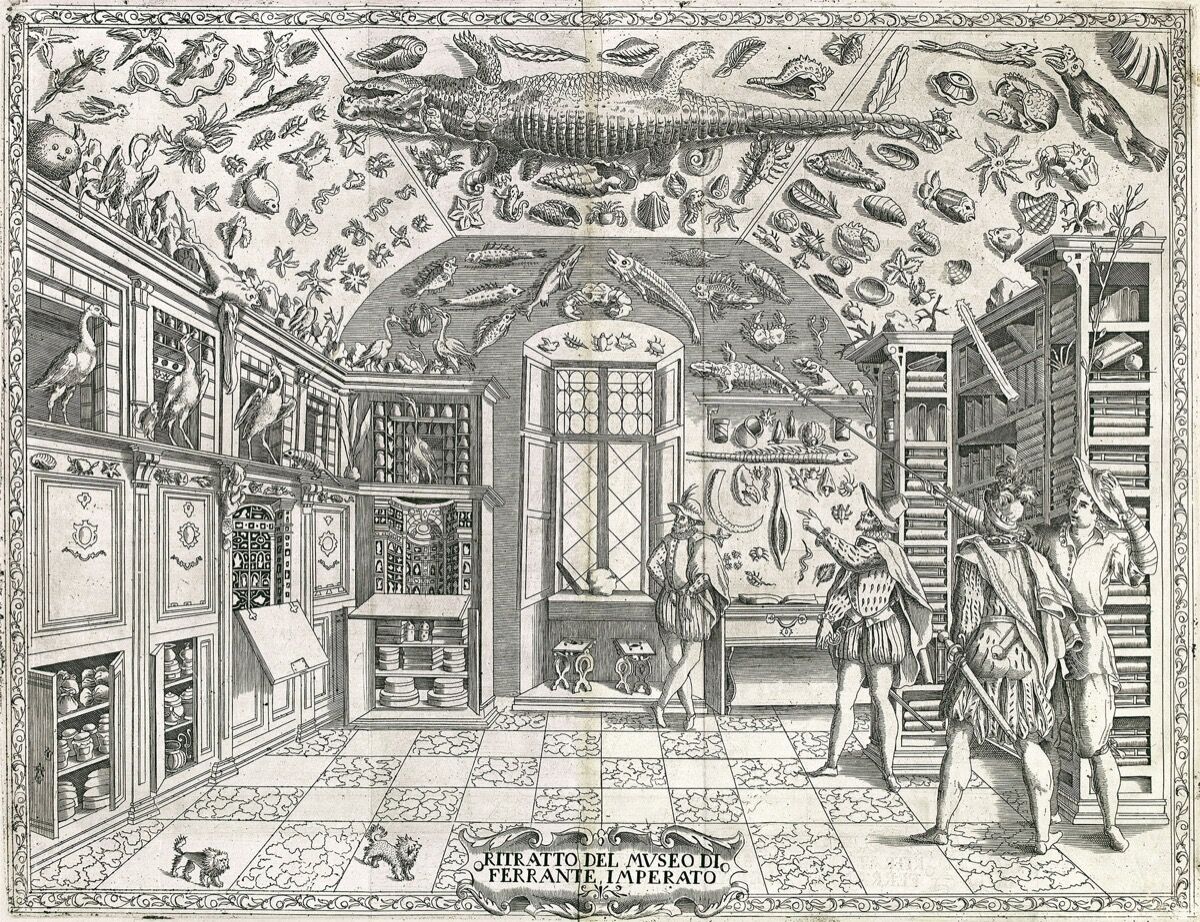
Domenico Remps,Cabinet of curiosities , that. 1690. Image via Wikimedia Commons.
Unicorn horns, mermaid skeletons, stuffed animals, preserved plants, clocks, scientific instruments, celestial globes,relics : these are the contents of cabinets of curiosities, which became fashionable in royal and aristocratic homes across Europe during the Renaissance, a time in history when man yearned to know everything as the effects of global exploration and of scientific experimentation were becoming more accessible.
Today we use the word cabinet of curiosities to describe any fascinating accumulation of mysterious objects. The original Renaissance definition of the cabinet of curiosities was more precise. This meant a diverse and carefully constructed collection of natural and man-made art and oddities that embodied the era's thirst for exploration and knowledge, and laid the foundation for museums as we know them today.

Set of skullsmemento mori - Santa Muerte Paris

Frans Francken the Younger,Room of art and curiosities , 1636. Image via Wikimedia Commons.
According to Quiccheberg, their content fell into a variety of categories such as artificialia , artificial antiquities and works of art; naturalia , plants, animals and other objects of nature; Scientifica , scientific instruments; exotica , objects from distant lands; and mirabilia , a generic term for other marvels that inspire wonder.
Found in many corners of the globe, these objects represented a vast array of art, science, and mysticism - what Quiccheberg called a theater of the world.». Some were as small as a closet, others as vast as a maze of large rooms.
While the search for weird and wonderful objects has been part of human evolution for immeasurable times, like thel’ has underline Wolfram Koeppe of Metropolitan Museum of Art , this collecting process flourished during the Renaissance. The invention of the compass in the 13th century and subsequent improvements in cartography sparked an explosive period of exploration and global trade in the 1500s and 1600s. In this Age of Exploration, rulers from across Italy, Spain, and England sent explorers around the world in search of new territory and deeper knowledge of the world.e.
At the same time, science became a definite discipline that sought to answer big questions about the earth, the heavens, and the human body. As the Catholic Church tried to ban scientific research – a threat to the theories put forward in biblical texts – volumes detailing medical discoveries and the structure of the cosmos were published en masse.

Engraving by Ferrante Imperato, Dell'Historia Naturale , 1599. Image via Wikimedia Commons.
At his home in Naples, the Italian aristocrat and apothecary Ferrante Imperato collected a dense and legendary cabinet of curiosities said to have numbered as many as 35,000 plant, animal, and mineral specimens.
Ferrante was also one of the first to represent a cabinet of curiosities, in the frontispiece of the 1599 catalog of his collection, Dell'history natural. The woodcut shows four men in breeches surrounded by all manner of curiosities, neatly arranged in a complex of drawers, shelves and glass cases. The contents spill over the ceiling, where a menagerie of stuffed fish, salamanders, and seashells are strategically pinned around what looks like its prized possession: a stuffed alligator.
Collections like these functioned as an orderly microcosm of the larger world, as well as a platform for Renaissance people to satisfy their thirst for wondering experiences. The cabinet of curiosities was not an end in itself but a source of endless beginnings, a wrote the historian Earle Havens , a cabinet-sized microcosm of the endless macrocosm, created by God, whose wonders never cease..
Most cabinets, however, weren't meant to be purely scientific - they were also places to explore personal tastes, indulge in mysticism, and demonstrate one's power. Beyond objects taken directly from nature, typical cabinets of curiosities contained sculptures, paintings, books, coins, medallions, precious stones, maps and scientific instruments.
They also housed objects representing mysticism and occultism: so-called magic stones; horns supposedly belonging to unicorns; enchanted creatures believed to be mandrakes and mermaids (made by sewing together a monkey's torso and a fish's tail). «Each object offered the opportunity to tell a story about an epic adventure or, more often, to make one, aa writing the art historian Giovanni Aloi.
Collecting precious objects was a long-standing tradition among the powerful, so early cabinets of curiosities regularly functioned as status symbols.
The breadth of a collection signified the intelligence, wealth, taste, and business prowess of its owner. «Standing at the center of this mini-universe and pointing at objects to reveal their deepest secrets, collectors felt a sense of ease and mastery over a world that most often seemed too big, too confusing and too inhospitable, Alois continued..
Emperor Rudolf II was known for his eclectic collecting tastes, to say the least. Had you secured an invitation to its opulent Prague Castle in the late 1500s, you might have been treated to a tour of its cache of treasures, which contained everything from magic stones, celestial globes and astrolabes to masterpieces by personalities such as
Albrecht Durer, Giuseppe Arcimboldo and Titian.
